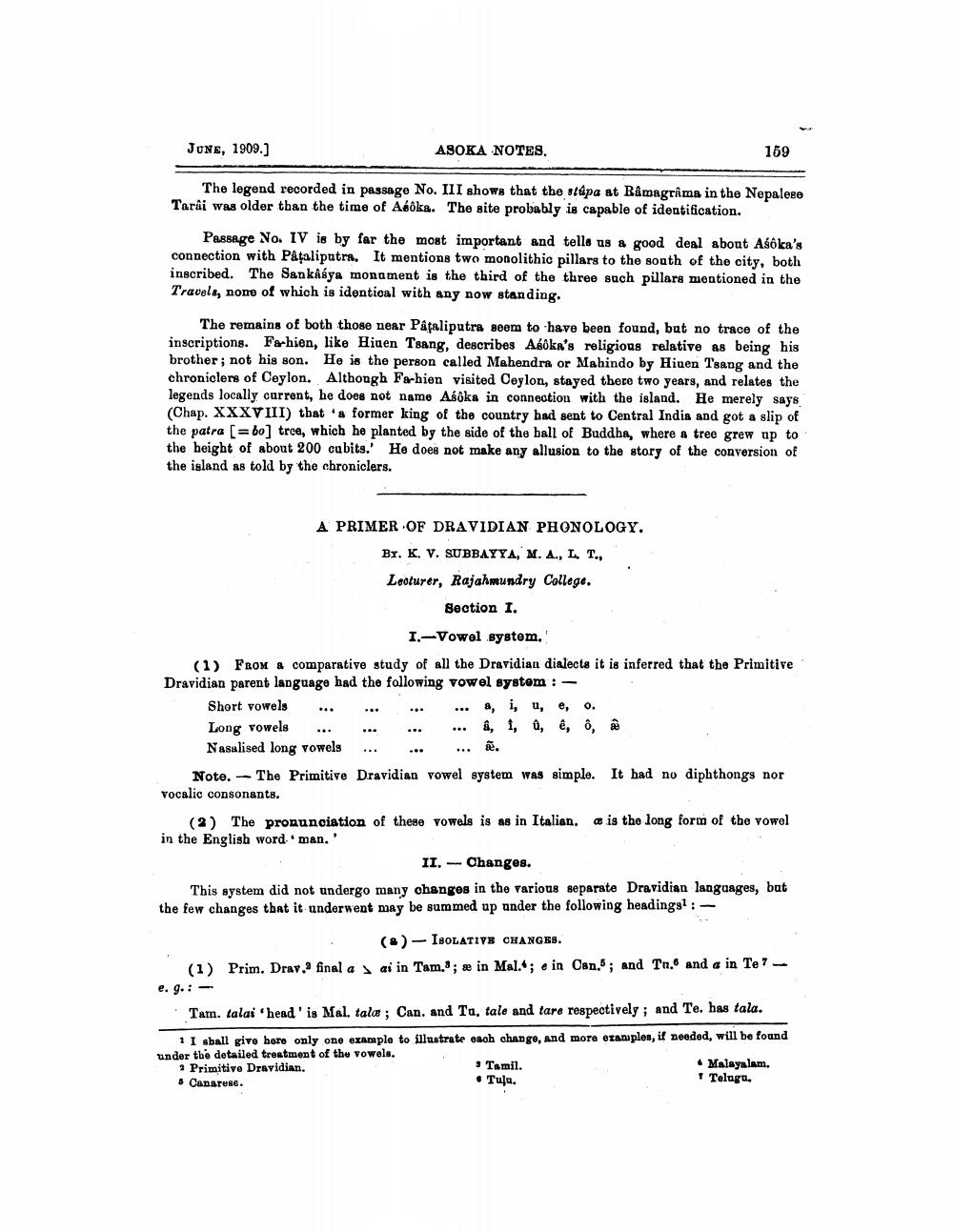________________
JONE, 1909.)
ASOKA NOTES
169
The legend recorded in passage No. III shows that the stúpa at Bâmagrima in the Nepalese Tarai was older than the time of Abóka. The site probably is capable of identification.
Passage No. IV is by far the most important and tells us a good deal about Asôka's connection with Påtalipatra. It mentions two monolithic pillars to the south of the city, both inscribed. The Sankâśya monament is the third of the three such pillars mentioned in the Travels, none of which is identical with any now standing.
The remains of both those near Påfaliputra seem to have been found, but no trace of the inscriptiong. Fahion, like Hiuen Tsang, describes Aboka's religious relative as being his brother; not his son. He is the person called Mahendra or Mahindo by Hiuen Tsang and the chroniclers of Ceylon. Although Fa-hien visited Ceylon, stayed there two years, and relates the legends locally current, he does not name Aśôka in connection with the island. He merely says (Chap. XXXVIII) that's former king of the country had sent to Central India and got a slip of the patra (= bo] trce, which he planted by the side of the ball of Buddha, where a tree grew up to the height of about 200 cubits. He does not make any allusion to the story of the conversion of the island as told by the chroniclers.
1.
A PRIMER OF DRAVIDIAN PHONOLOGY.
Br. K. V. SUBBAYYA, M. A., LT. Leoturer, Rajahmundry College.
Section 1.
I.-Vowel system. (1) From a comparative study of all the Dravidian dialects it is inferred that the Primitive Dravidian parent language had the following vowel systom: - Short vowels
*** ... ... ... 8, i, u, e, 0. Long vowels ... ... ... ... a, i, û, ê, ê, ê
Nasalised long vowels ... ... ... .
Note. - The Primitive Dravidian vowel system was simple. It had no diphthongs nor vocalic consonants.
(2) The pronunciation of these vowels is as in Italian, is the long form of the vowel in the English word.. man.'
II. - Changes. This system did not undergo many changes in the various separate Dravidian languages, but the few changes that it underwent may be summed up under the following headings! :
. ()- ISOLATIYE CHANGES. (1) Prim. Drav.' final a ai in Tam."; æ in Mal; e in Can.; and Tn. and a in Te? - e. g. :
Tam. talai 'head' is Mal tala; Can. and Ta, tale and tare respectively; and Te, has tala.
1 I sball givo horo only one example to illustrate each chango, and more oranıples, if needed, will be found under the detailed treatment of the vowels. 1 Primitive Dravidian.
- Tamil.
• Malayalam. 5 Canarese.
• Tula.
1 Telugu




